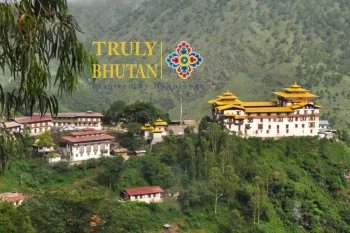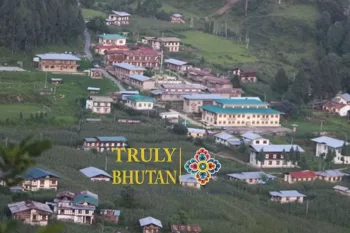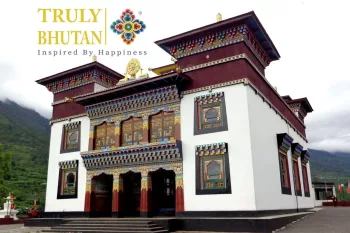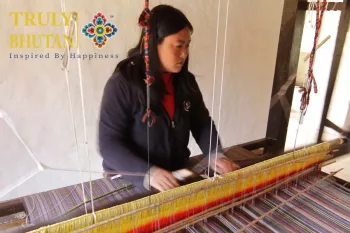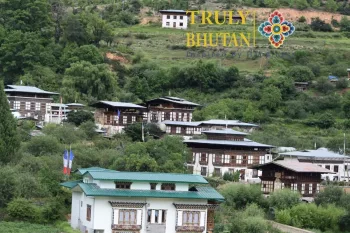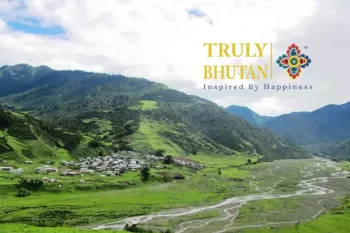An hour and a half drive away from Trashigang through a feeder road will take you to the village of Bartsham. The Chador Lhakhang, or Sangdha Gyepay Ling, in Bartsham, formerly established in the 12th century, is one of the oldest and most religious monasteries in Eastern Bhutan. Situated atop a hill that dominates a striking view of villages in north Trashigang, the monastery is a regarded place of worship for the 700-household Bartsham people and believers across the society.
Also called ÅgGonpa-RingbooÅh in the local language, the monastery is the protector of one of Bhutan’s most profoundly revered spiritual treasures, a thumb-size miniature of Chana Dorji that, folklore knows it, arrived at Bartsham through spiritual divination. The source of the imitation, respectfully called Meme Chador by the resident folk, goes back to the Sangdha Tumpo (the key Treasure Teachings) revealed by the great treasure revealer Terton Pema Lingpa.
The establishment of the present-time Chador Lhakhang was laid in the early 1940s by Lama Pema Wangchen (too recognized as Lama Nagpo) to disseminate the Dudjom Tersar practice of his master Dudjom Jigdral Yeshe Dorje (Dudjom Rinpoche). After Lama Nagpo passed away, his devotee Lam Kunzang Wangdi (Lam Nyingku) took over the monastery.

